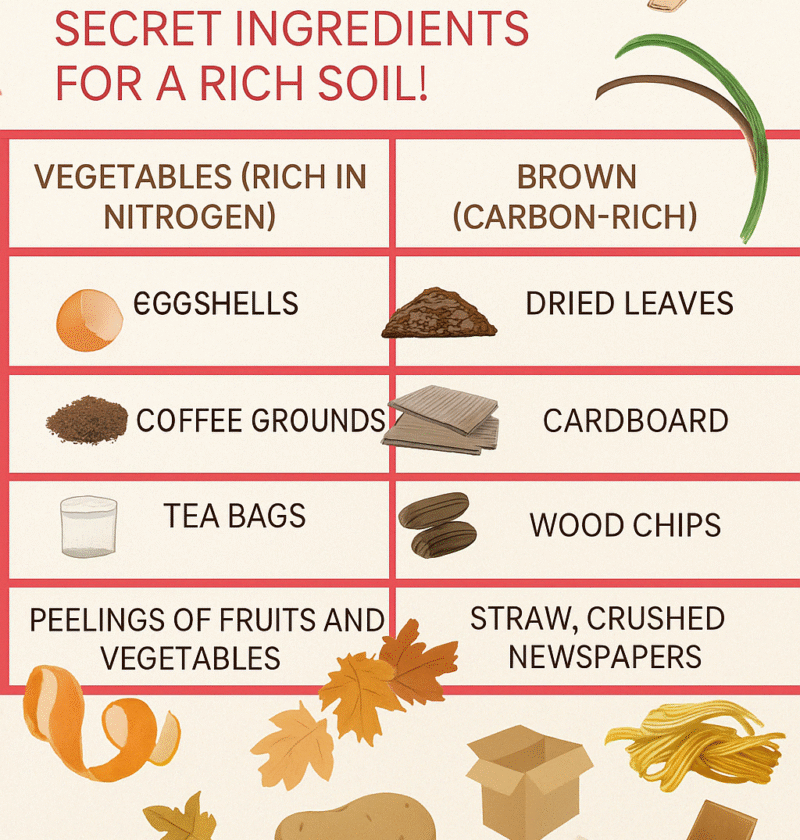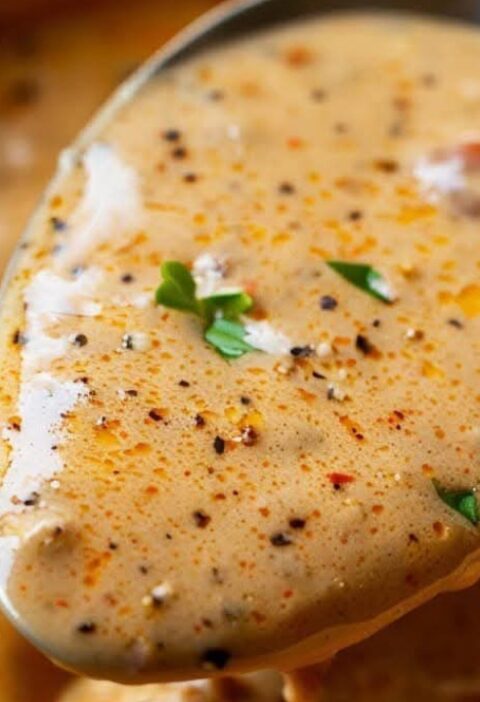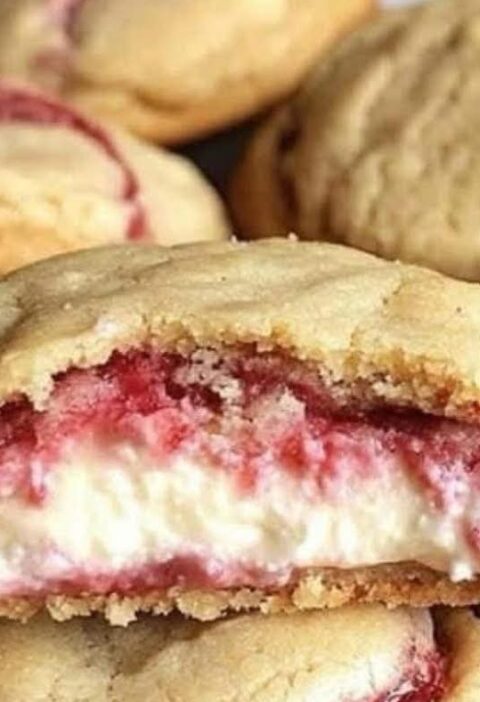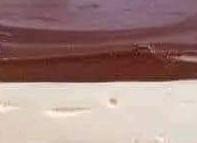What to Put in a Compost Bin – Secret Ingredients for Rich, Fertile Soil 🌿
If you want to grow lush vegetables, vibrant flowers, or thriving herbs, the secret lies in your soil—and the secret to great soil is compost. Composting turns everyday organic waste into dark, crumbly, nutrient-rich humus that feeds your garden naturally. But not all compost is created equal. If you want to make truly powerful compost that enhances plant growth, prevents disease, and retains moisture, you need to know what to put in your compost bin—and a few secret ingredients can take your pile from good to gold.
This guide walks you through what to include, what to avoid, and how to supercharge your compost with little-known additions that improve aeration, mineral content, and nutrient availability. Whether you’re a beginner or an experienced gardener, these tips will help you create compost that transforms your soil into a thriving ecosystem.
What Makes Great Compost?
Great compost is made from a balance of two essential ingredients: greens and browns.
Greens are nitrogen-rich and include things like kitchen scraps, coffee grounds, and grass clippings.
Browns are carbon-rich and include leaves, straw, paper, and cardboard.
The ideal ratio is roughly 2 parts browns to 1 part greens. This balance ensures your pile heats up properly, breaks down efficiently, and doesn’t smell. Add moisture and air, and nature takes care of the rest.
Secret Ingredients That Supercharge Compost
Want to make compost that performs like premium fertilizer? These lesser-known additions improve structure, add essential nutrients, and help your pile decompose faster.
1. Finished Compost (or Commercial Activators)
Adding a scoop of finished compost to a new pile introduces billions of beneficial microbes. These microscopic workers jumpstart decomposition and help break down tough materials faster.
Pro Tip: If you don’t have finished compost, use a handful of commercial compost activator or even aged soil from your garden beds.
2. Algae or Chlorella Powder
Adding algae, pond scum, or even powdered chlorella to your compost bin adds trace minerals, enzymes, and growth hormones that speed up microbial activity. Algae is high in nitrogen and ideal for rebalancing a pile that’s too dry or brown-heavy.
Use Case: Dried powdered spirulina or chlorella can be sprinkled in small amounts monthly.
3. Wood Ash
Wood ash from untreated hardwood is rich in potassium and helps balance overly acidic compost. Just a handful per week adds micronutrients like calcium and magnesium and improves microbial activity.
Caution: Use sparingly—too much ash can raise pH too far and slow decomposition.
4. Crushed Oyster Shells or Eggshells
These natural sources of calcium carbonate slowly release calcium while improving aeration and preventing matting in the pile. Crushed oyster shells are especially helpful for composting acidic greens like fruit peels or coffee grounds.
Tip: Dry and crush eggshells before adding to speed decomposition.
5. Comfrey or Yarrow Leaves
These dynamic accumulator plants pull nutrients from deep in the soil and deliver them to your compost pile. Comfrey is high in potassium and nitrogen. Yarrow speeds up microbial activity.
Use: Add a few chopped handfuls of leaves when turning the pile for an extra nutrient burst.
Best Browns to Include
Shredded paper and cardboard (non-glossy)
Dry leaves
Straw and hay
Corn stalks
Sawdust from untreated wood
Pine needles (in small amounts)
Brown paper bags
Wood shavings
These add structure and carbon, keeping the pile fluffy and helping to absorb moisture from wet greens.
Best Greens to Include
Vegetable scraps
Fruit peels
Coffee grounds and filters
Tea bags (without staples)
Fresh grass clippings
Garden trimmings
Seaweed or kelp
Manure from herbivores (rabbits, chickens, goats)
These materials are rich in nitrogen and provide energy for microbes to break everything down.
What to Avoid in Your Compost Bin
Some materials attract pests, carry disease, or decompose too slowly. Avoid these:
Meat, dairy, or oily foods
Pet waste (dogs or cats)
Glossy or coated paper
Charcoal ash or coal
Treated wood chips
Diseased plants
Weeds with mature seeds
Synthetic fabrics or plastics
These can cause odor, contamination, or toxicity in your finished compost.
Tips for Composting Success
Maintain balance: Stick to a 2:1 ratio of browns to greens
Chop materials: Smaller pieces break down faster
Keep it moist: Like a wrung-out sponge—not soggy
Turn regularly: Aerating speeds decomposition and prevents odor
Layer smart: Alternate greens and browns for even breakdown
Cover the pile: Use a lid or tarp to hold heat and moisture
Use a bin with airflow: Vented bins or open piles work best for airflow and drainage
Indoor Compost Options
If you can’t compost outdoors, consider:
Worm bins (vermicomposting): Use red wigglers to turn food scraps into worm castings
Bokashi composting: Uses fermentation to pre-process food waste indoors
Electric composters: Speed up decomposition in 24–48 hours for small spaces
Even small amounts of compost produced indoors can be added to potted plants, balcony gardens, or community garden plots.
Using Finished Compost in the Garden
Top dressing: Spread 1–2 inches around plants and trees
Potting mix enhancer: Mix 1 part compost with 2 parts soil
Mulch alternative: Apply around vegetable beds to suppress weeds and retain moisture
Compost tea: Steep compost in water for 24 hours, then use to feed seedlings or spray on leaves as a foliar tonic
Compost not only feeds plants but also improves soil texture, increases water retention, and adds beneficial microbes that protect against disease.
What Gardeners Say About Supercharged Compost
Kevin Espiritu (Epic Gardening): “Your compost is only as good as what you feed it. Adding rock dust, oyster shells, or even a handful of ash can take it to the next level.”
Jessica Sowards (Roots and Refuge): “I add eggshells, comfrey, and sometimes molasses to keep my compost hot and active.”
Joe Lamp’l: “Healthy compost starts with variety. Diversity in your ingredients = diversity in your soil life.”
Charles Dowding: “A compost pile is a living thing. Feed it thoughtfully and it will reward your plants with richness.”
Melissa K. Norris: “I compost everything I can. And when I add wood ash in winter, I get the best results in spring.”
10 Frequently Asked Questions (FAQs)
1. How long does it take to make compost?
Typically 2–6 months depending on temperature, materials, and how often you turn it.
2. Can I compost in winter?
Yes, though the process slows. Keep adding and turn again in spring.
3. Is it okay if my compost smells?
Bad smells mean too much green or poor airflow. Add dry browns and turn.
4. What does finished compost look like?
Dark brown, crumbly, earthy-smelling, and unrecognizable from original materials.
5. Can I compost citrus peels and onions?
Yes, in moderation. Chop them and bury in the center for best results.
6. How do I keep animals out of my compost?
Avoid adding food scraps like meat or dairy. Use a sealed or elevated bin.
7. Should I add weeds to compost?
Only if they haven’t gone to seed or are disease-free. Hot piles can kill seeds.
8. Can I compost moldy food?
Yes—mold is part of decomposition. Just avoid meat or dairy.
9. How do I speed up composting?
Chop ingredients, maintain balance, keep it moist, and turn weekly.
10. Can I use compost for starting seeds?
Yes—mix with potting soil. Avoid using fresh compost for delicate seedlings.
Final Thoughts
Composting is more than just recycling kitchen scraps—it’s a way to build the health of your entire garden from the ground up. By choosing the right materials and adding a few secret ingredients like wood ash, algae, or crushed shells, you create compost that doesn’t just feed plants—it transforms your soil into a living, breathing system.
Balance your greens and browns, keep it moist and aerated, and give your pile time to mature. The result is black gold: a nutrient-rich, microbe-packed, moisture-holding treasure that will support everything you grow.
Must express something to keep getting my recipes… Thank you!






